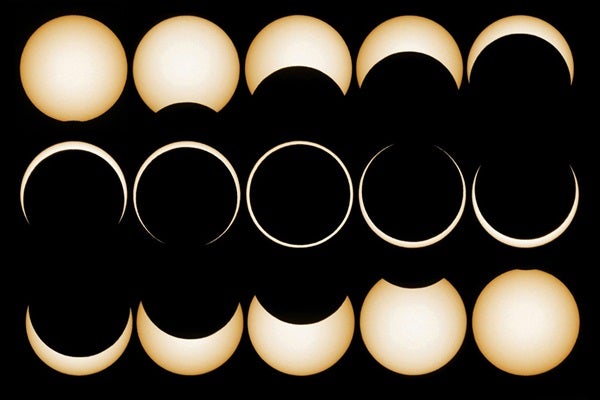- Editor David J. Eicher witnessed the event from Kenya and calls it the “prettiest annular eclipse [he’s] ever seen.”.
- View and submit images of this morning’s eclipse in our Online Reader Gallery.
January 11, 2010
At 7 p.m. EST January 2, Earth reached perihelion — the closest point to the Sun during its yearly orbit. At perihelion, Earth lies 91.4 million miles from the Sun, some 3.1 million miles closer than at its farthest point in early July.
Earth’s proximity to the Sun in January causes our star to appear slightly larger in the sky. This contributes to one of the year’s more impressive events: an annular solar eclipse. On the 15th, the Moon passes directly between the Sun and Earth. But the relatively small Moon on that date fails to cover the big Sun, leaving a ring (annulus) of sunlight visible at maximum.
Observers will see this annular eclipse along a narrow path that begins in central Africa and then treks across the Indian Ocean, through southern India, Sri Lanka, Burma, and, ultimately, China. Viewers in much of Africa, eastern Europe, and Asia will witness a partial eclipse. Be sure to use an approved solar filter to directly view the eclipsed Sun.
The last annular eclipse occurred roughly 1 year ago, January 26, 2009. The next one will happen May 20, 2012.
Editor David J. Eicher will witness the eclipse from Kenya. Learn more about his trip here and follow his adventures on Twitter @AstronomyMag.
- Track the path of the eclipse virtually with Astronomy.com’s interactive star chart: StarDome
- View and post eclipse images in our Online Reader Gallery
- Talk about your favorite eclipse experience in our Reader Forums
- Sign up to receive Astronomy‘s FREE weekly e-mail newsletter!











